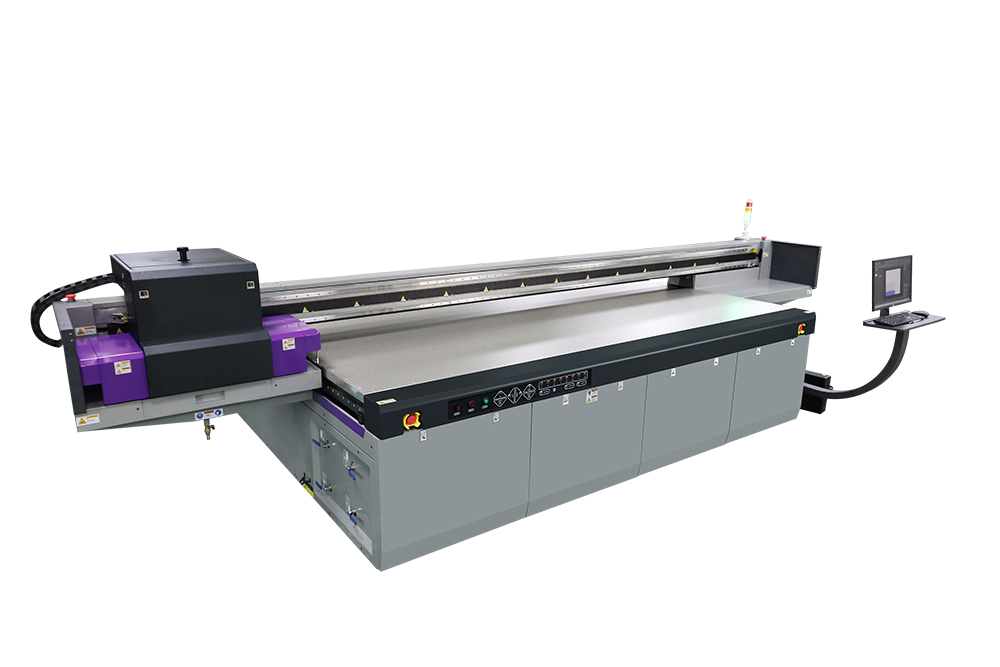What Materials Can a UV Flatbed Printer Handle?
What Materials Can a UV Flatbed Printer Handle?
UV flatbed printers have revolutionized the printing industry by offering versatility, precision, and high-quality output on a wide range of materials. These printers utilize ultraviolet (UV) light to cure or dry the ink instantly after it is applied to the material, allowing for rapid printing and finishing. This technology enables printers to work with diverse substrates that traditional printing methods might not be able to handle effectively. In this article, we will explore the various materials that a UV flatbed printer can handle, highlighting their unique characteristics and applications.

1. Plastics
UV flatbed printers excel at printing on plastic materials due to the ink’s ability to bond directly to the surface without the need for additional coatings or primers. Plastics such as acrylic, polycarbonate, polystyrene, and polyvinyl chloride (PVC) are commonly used. These materials are popular for signage, point-of-purchase displays, and product prototypes because they are lightweight, durable, and weather-resistant. The UV-cured ink ensures that the prints are fade-resistant and long-lasting, even in outdoor environments.
2. Glass
Glass is another material that UV flatbed printers can handle effectively. The ink adheres well to glass surfaces, allowing for vibrant and detailed prints. UV-printed glass is often used in architectural applications, such as decorative partitions, window graphics, and even furniture. The ability to print directly on glass without compromising its transparency or structural integrity makes UV flatbed printing a preferred choice for designers and architects.
3. Wood
Wooden surfaces can also be printed on using UV flatbed printers. The ink bonds well to wood, allowing for intricate designs and patterns to be directly printed onto the material. This technology is particularly useful for custom furniture, decorative panels, and personalized gifts. UV printing on wood offers a more eco-friendly alternative to traditional methods, such as screen printing or laser engraving, as it requires fewer chemicals and produces less waste.
4. Metals
UV flatbed printers can print directly on metal surfaces, including aluminum, stainless steel, and brass. This capability is especially valuable for industrial applications, such as labeling machinery, creating custom automotive parts, or producing high-end decorative pieces. The UV-cured ink provides excellent adhesion and durability, ensuring that the prints can withstand harsh environments and resist fading or scratching.
5. Fabrics and Textiles
While traditional inkjet printers may struggle with fabric materials due to ink bleeding or spreading, UV flatbed printers can handle a variety of textiles with ease. Materials like cotton, polyester, nylon, and even leather can be printed on with UV inks. This technology allows for the creation of custom clothing, banners, flags, and soft signage with vibrant colors and sharp details. UV-cured inks are also more resistant to washing and fading, making them ideal for textiles that require frequent cleaning or exposure to sunlight.
6. Ceramics and Tiles
Ceramic tiles and other ceramic materials can be printed on using UV flatbed printers. This technology is particularly useful for creating unique and personalized designs for home decor, such as kitchen backsplashes, bathroom tiles, and decorative plates. UV-cured inks adhere well to ceramic surfaces, ensuring that the prints are durable and resistant to moisture and wear.
7. Rigid and Flexible Materials
UV flatbed printers can handle both rigid and flexible materials, making them suitable for a wide range of applications. Rigid materials like corrugated plastic, foam board, and magnetic sheets are commonly used for signage and displays. Flexible materials, such as vinyl and certain types of plastic films, are ideal for banners, wraps, and vehicle graphics. The versatility of UV flatbed printers allows for seamless transitions between different material types, making them a valuable tool for print shops and manufacturers.
8. Electronics and Components
UV flatbed printers can also be used to print on electronic components and devices. This technology is particularly useful for prototyping and small-scale production of custom electronic devices, such as smartphones, tablets, and wearable technology. UV-cured inks offer excellent adhesion to various electronic surfaces, allowing for precise and detailed printing of logos, designs, or functional elements like conductive traces.
9. Specialty Materials
In addition to the more common materials mentioned above, UV flatbed printers can also handle specialty substrates. This includes materials like carbon fiber, composite boards, and even some types of stone or concrete. These unique materials are often used in specialized applications, such as automotive design, aerospace engineering, or architectural installations. The ability to print directly on these surfaces with UV-cured inks opens up new possibilities for customization and innovation.
Conclusion
UV flatbed printers offer unparalleled versatility in the types of materials they can handle. From plastics and glass to wood, metal, and even specialty substrates, these printers can produce high-quality, durable prints on a wide range of surfaces. This technology has revolutionized the printing industry by enabling the creation of custom and personalized products for various applications, including signage, decor, electronics, and more. As UV flatbed printing technology continues to advance, we can expect even more materials to be compatible with this innovative printing method, further expanding its potential applications and markets.
